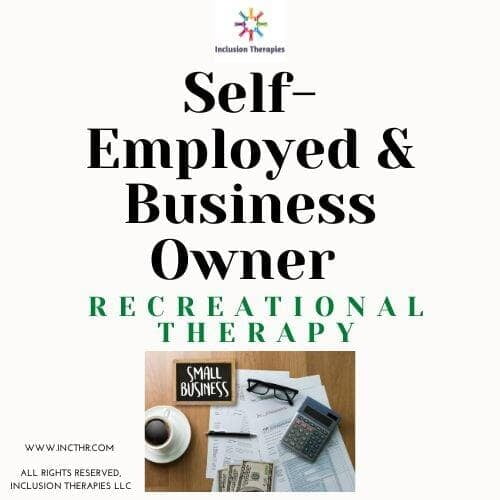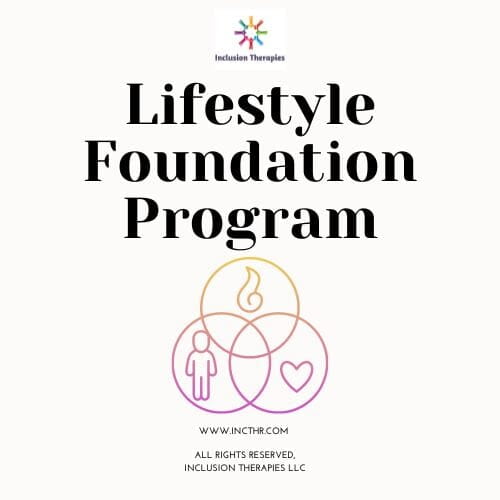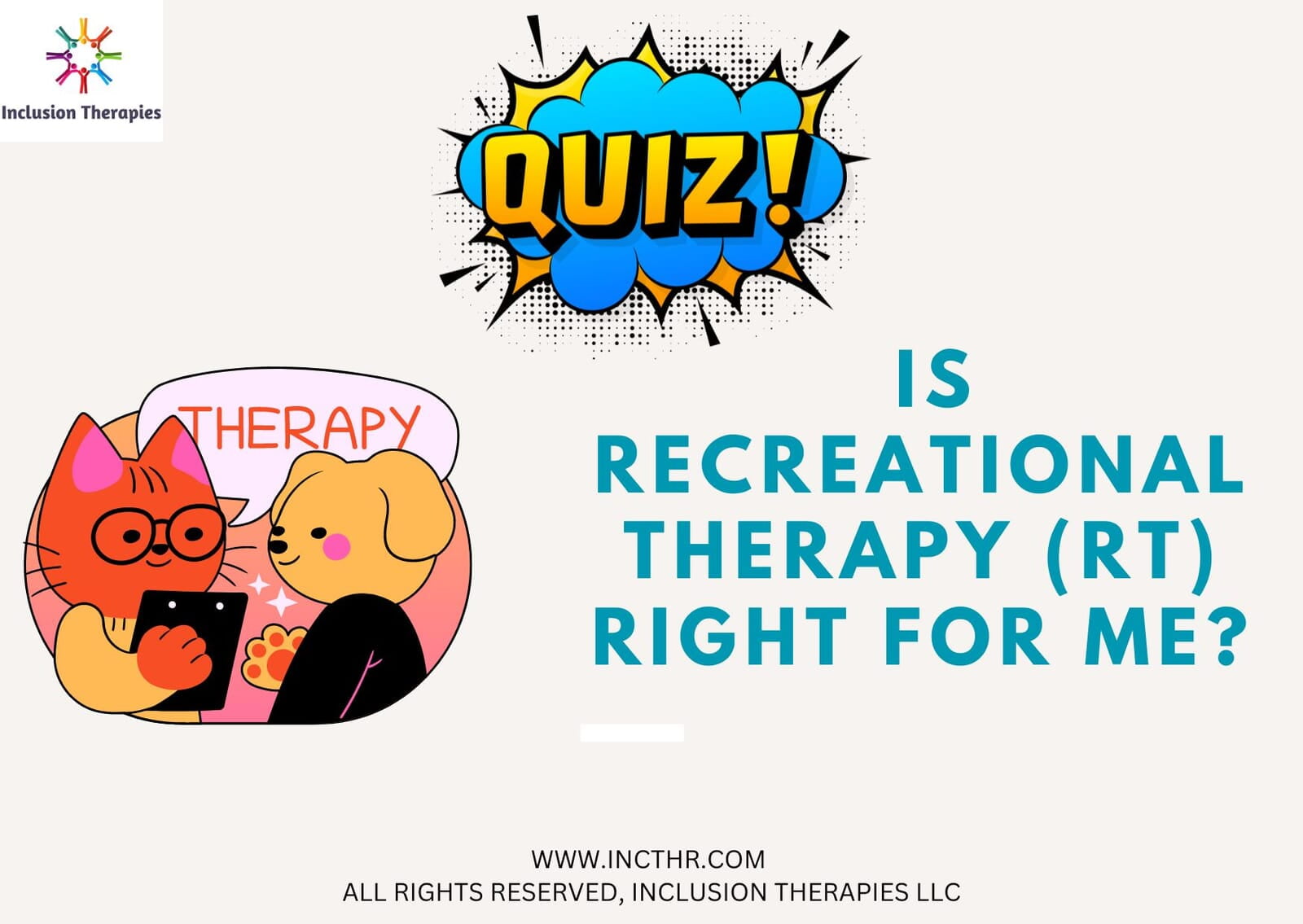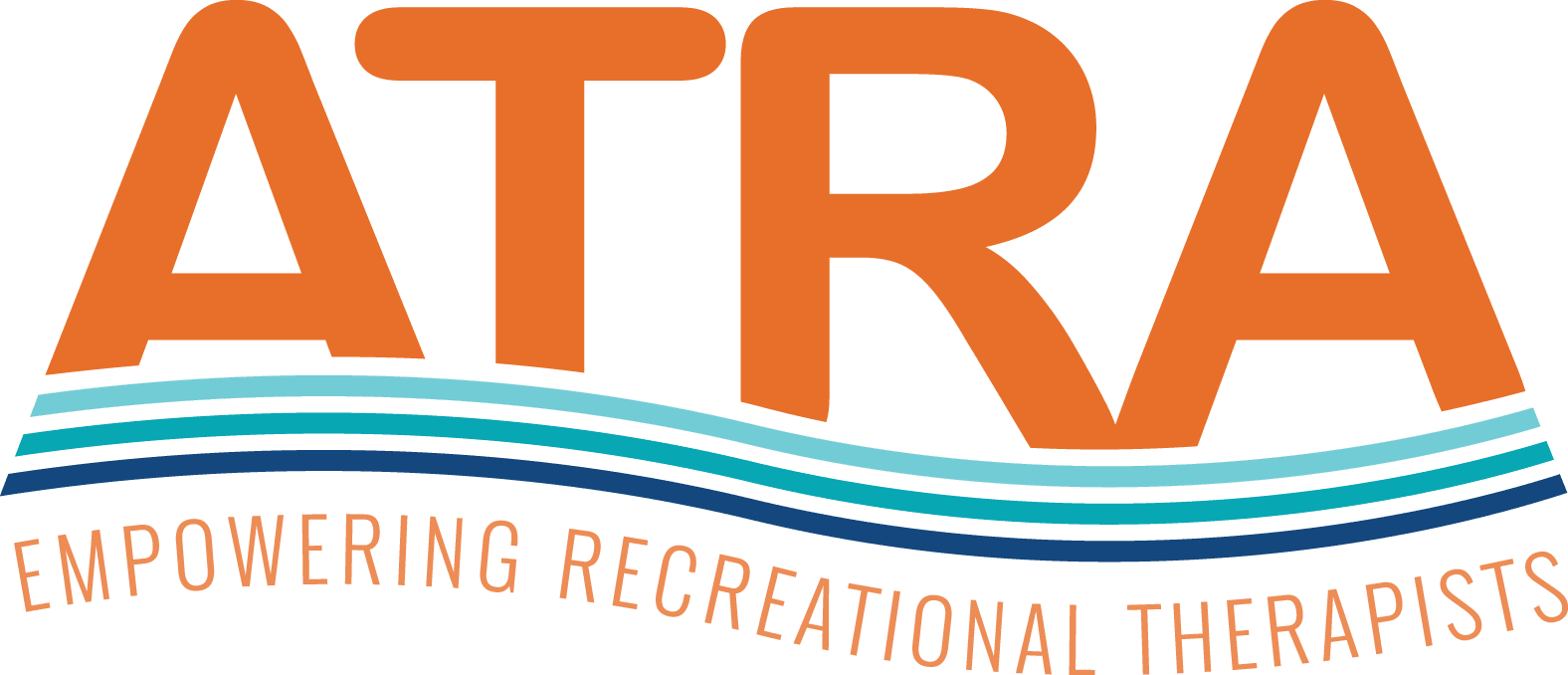
What is Peak (or High-Level) Wellness?
To Reach as High a Level of Wellness
as the Individual is Capable of Achieving.
(Conditions treated do not have a medical diagnosis).
To Start Recreational Therapy:
1. Sign up for membership (which includes automatic enrollment in the Lifestyle Foundation Program).
PATH TO GOAL:
Peak Wellness
"Wellness is the path (or process) to reach the goal ("the active process of becoming aware of and making choices toward a more successful existence")."
"[H]ealth focuses on illness status and the individual’s relationship to that status, wellness transcends the absence of disease[.]- The International Journal of Health, Wellness, and Society Volume 9, Issue 1, 2018
- Bart R, Ishak WW, Ganjian S, Jaffer KY, Abdelmesseh M, Hanna S, Gohar Y, Azar G, Vanle B, Dang J, Danovitch I. The Assessment and Measurement of Wellness in the Clinical Medical Setting: A Systematic Review. Innov Clin Neurosci. 2018 Oct 1;15(9-10):14-23. PMID: 30588362; PMCID: PMC6292717.

Peak Wellness is as high a level of wellness as a person is capable of achieving ("where illness and wellness are conceived along a continuum, with death on one end and peak wellness at the other").
- David R. Austin, Ph.D., CTRS, FALS, via The British Columbia Therapeutic Recreation Association

At Inclusion Therapies, you move along your wellness path guided by Peak Wellness practices. Our Lifestyle Foundation Program for Health Aging is your personalized map.
"“Health is more than the absence of disease. It is something positive, and involves physique and vitality, and it is mental as well as physical. [...]George C. Whipple, co-founder of Harvard School of Public Health, 1916"
- Logan AC, Berman BM, Prescott SL. Vitality Revisited: The Evolving Concept of Flourishing and Its Relevance to Personal and Public Health. Int J Environ Res Public Health. 2023 Mar 13;20(6):5065. doi: 10.3390/ijerph20065065. PMID: 36981974; PMCID: PMC10049456.
FAQ: Peak Wellness
The highest-level wellness is gained when we exist in a "very favorable environment" and enjoy "peak wellness" (where illness and wellness are conceived along a continuum, with death on one end and peak wellness at the other). The "aim of 'well medicine' is to help clients move toward self-actualization. High-level wellness deals with health enhancement in contrast to the traditional medical model that concerns itself with treating disease ."
- David R. Austin, Ph.D.
Treatment Goal is Optimal Emotional, Physical and Social Health.
Wellness is the Path to the Goal.
Peak Wellness is the Direction on the Path.
"First, wellness is different than health. Whereas the term health focuses on illness status and the individual’s relationship to that status, wellness transcends the absence of disease[.][...]
Furthermore, wellness is different from wellbeing. Wellbeing can be described as the balance-point between an individual’s resources and the challenges he or she faces[.][...]
Although wellbeing is a step toward wellness, it is not necessarily as encompassing as wellness. It is possible for someone to be in a state of wellbeing but not wellness; depletion of adequate resources (psychological, social, and/or physical) can prevent one from attaining wellness. [...]
Additionally, wellness should not be confused with quality of life (QOL), which involves an individual’s subjective perspective of his or her health and function in physical, psychological, social, and cognitive domains.[...]
QOL is a measure of a patient’s subjective evaluation of health and life aspects despite a given diagnosis, whereas according to the WHO, wellness involves more than the absence of disease, implying that absence of disease is one of the requirements for wellness."
- Bart R, Ishak WW, Ganjian S, Jaffer KY, Abdelmesseh M, Hanna S, Gohar Y, Azar G, Vanle B, Dang J, Danovitch I. The Assessment and Measurement of Wellness in the Clinical Medical Setting: A Systematic Review. Innov Clin Neurosci. 2018 Oct 1;15(9-10):14-23. PMID: 30588362; PMCID: PMC6292717.
Individuals with medical diagnoses and preventive health conditions (that do not have a medical diagnosis) use Peak Wellness practices during the Lifestyle Foundation Program.
Examples of Preventive Health Conditions include:


How Will This Help Me?
Clients "feel more and more able to be in control of their lives and to meet adversity as they move along the continuum toward higher levels of health.[...] Typical therapeutic outcomes include increasing personal awareness, improving social skills, enhancing leisure abilities, decreasing stress, improving physical functioning, and developing feelings of positive self-regard, self-efficacy and perceived control [.]"
- (The Health Protection/Health Promotion Model, David R. Austin, Ph.D., CTRS, FALS, via The British Columbia Therapeutic Recreation Association)

How Long Will This Take?
From 2 - 6 months.
The duration of treatment is dependent on the wellness plan goals and the client's progression towards them (documented for each RT session and Periodic Evaluation). Most importantly, it will be based on the client's expectations, their capacity for self-development and their efforts. Our services are delivered in our Lifestyle Foundation Program with each cycle two months in duration.

Why Should I Work With a Recreational Therapist?
Recreational Therapy is the allied health speciality that uses recreation-based medical treatment for Emotional, Physical and Social Health, incorporating the five domains (cognition, emotional, physical, social and spiritual).
The practice of Therapeutic Recreation by Recreational Therapists is "based on a philosophy that encourages clients to attempt to achieve maximum health, rather than just recover from illness."
- (David R. Austin, Ph.D., CTRS ).
"[W]ellness as an evolving process toward achieving one’s full potential; it is positive/affirming and holistic, and encompasses lifestyle, spiritual, and environment wellbeing domains. Wellness also accounts for the physical, mental, and social domains implied in health, and thus health is dependent on sufficient wellness."
- Bart R, Ishak WW, Ganjian S, Jaffer KY, Abdelmesseh M, Hanna S, Gohar Y, Azar G, Vanle B, Dang J, Danovitch I. The Assessment and Measurement of Wellness in the Clinical Medical Setting: A Systematic Review. Innov Clin Neurosci. 2018 Oct 1;15(9-10):14-23. PMID: 30588362; PMCID: PMC6292717.

Preventive Health
Preventative Health conditions do not have a medical diagnosis.
For example, grief, stress, loneliness and social isolation, work issues, nutrition, etc. These conditions are treated to prevent future medical diagnosed conditions.
Recreational Therapy (RT) for
Community Integration
[1] (Townley et al., 2013) , page 2 at https://www.bctra.org/wp-content/uploads/tr_journals/5913-19715-1-PB.pdf
A community brings people together and helps them form a common identity.[1]
This includes “having ‘something to do’ (occupation), ‘someone to love’ (social support), and ‘somewhere to live’ (independent living)[.]”[2]
[2] Page 3, McColl et al. (1998), at https://www.bctra.org/wp-content/uploads/tr_journals/5913-19715-1-PB.pdf
View Educational Video on Recreational Therapy and Community Integration from UK Healthcare (Regional Hospital in Kentucky, USA):
We offer our members optional online and in-person Community-Based group events to take part in. In-person events include sporting events, museums, and a wide range of in-person activities in the greater Central Texas area (transportation is the responsibility of each member and some events have additional third party fees required for members to attend, i.e., tickets, etc.).
Maximum of four groups per month are included in monthly membership (additional groups would incur per group fees).
Recreational Therapy (RT) for
Occupational/Workplace Stress (including Entrepreneur, Self-Employed &
Small Business Owners)
Recreational Therapy (RT) for
Loneliness and Isolation
“Loneliness is essentially the feeling of being uncomfortable or in distress when someone feels that there is a gap between the connection they would like and the connection they actually have[...] An individual experiencing loneliness will often describe feeling alone. This is distinct from social isolation where there is a paucity of social connectedness."
- American Medical Association
"Loneliness is defined as the negative emotional state resulting from a discrepancy between the patterns of social interactions individuals want and what they actually experience (Wang et al., 2018). Unmet needs, both social and intimate, and states of emotional distress characterize the subjective experience of loneliness (Bruce at al., 2019; Courtin & Knapp, 2017). The incongruence that can exist between the availability and quality of social relationships that people have and want means that one can feel lonely despite having a large social network and be socially isolated without being lonely (Menec et al., 2020).
[...]
Social isolation is an independent but related construct defined in objective, rather than subjective terms (Menec et al., 2020; Williams & Braun, 2019). It describes a lack of social relationships determined by measuring contact frequency with family and friends (Courtin & Knapp, 2017), as well as a tangible deficit in an individual’s social networks and access to information and resources (Williams & Braun, 2019)."
- Mattea E. Mahut, Darla Fortune, Social Prescribing and Therapeutic Recreation Making the Connection, Therapeutic Recreation Journal, Vol. LV, No. 2, pp. 135–149, 2021, https://doi.org/10.18666/TRJ-2021-V55-I2-10694
At Inclusion Therapies, we offer our members (who have loneliness and/ or isolation in their treatment plan) applied social connection practices within their sessions.
"Loneliness is not your fault. Social isolation is not your fault[.]"
- American Medical Association
"In worst-case scenarios, loneliness becomes a self-fulfilling prophecy — a snare that tightens with each effort to shrug it off. What you sometimes see is the onset of a kind of feedback loop, Hawkley told me: A person desperately wants not to be lonely, but fear and anxiety have convinced them their loneliness reflects a fundamental undesirability. “They are absolutely certain that they’re not worth talking to, that no one likes them, that they’re not a good person and that it’s all their fault[.]"
- Matthew Shaer, Why Is the Loneliness Epidemic so Hard to Cure?, The New York Times Magazine, August 27, 2024
Educational Video,
Surgeon General’s Advisory on our Nation’s Loneliness Epidemic | 5.2.2022
(from U.S. Department of Health and Human Services)
"About half of U.S. adults experience loneliness, which presents a major public health threat that is akin to smoking and obesity. [...]Social isolation in itself was associated with a 50% increased risk of developing a neurocognitive disorder and other serious medical conditions[.] [S]ocial isolation and loneliness were associated with a 29% increased risk of heart disease and a 32% risk of stroke[.][...S]ocial isolation and loneliness lead to higher risk of high blood pressure, heart disease, obesity, anxiety, depression, memory issues and even death." - American Medical Association
"Often the reasons for visiting one’s general practitioner (GP) or primary care physician are not medical issues; rather they are psychosocial in nature[.] Mobily and Dieser (2018) note that engaging in recreation and leisure can address issues of loneliness by creating spaces where being around other people is desirable, demonstrating the importance of supporting socialization during recreation and leisure experiences."
- Mattea E. Mahut, Darla Fortune, Social Prescribing and Therapeutic Recreation Making the Connection, Therapeutic Recreation Journal, Vol. LV, No. 2, pp. 135–149, 2021, https://doi.org/10.18666/TRJ-2021-V55-I2-10694
Recreational Therapy (RT) for
Stress Management
"Any intrinsic or extrinsic stimulus that evokes a biological response is known as stress. The compensatory responses to these stresses are known as stress responses."
"Effective techniques for stress management are varied. They typically include behaviors that improve physical health, such as nutrition and exercise, but may also incorporate strategies that improve cognitive and emotional functioning."
- "Stress management offers a range of ways to help you better deal with stress and difficulty, also called adversity, in your life. Managing stress can help you lead a more balanced, healthier life."
- "Stress that's not dealt with can lead to many health problems, such as high blood pressure, heart disease, stroke, obesity and diabetes."
- "The results of past studies have demonstrated the effect of stress on the process of memory[.]"
- "Based on the type, timing and severity of the applied stimulus, stress can exert various actions on the body ranging from alterations in homeostasis to life-threatening effects and death. In many cases, the pathophysiological complications of disease arise from stress and the subjects exposed to stress, e.g. those that work or live in stressful environments, have a higher likelihood of many disorders. Stress can be either a triggering or aggravating factor for many diseases and pathological conditions."
- "The net effect of stress on cognition is a reduction in cognition and thus, it is said that any behavioral steps undertaken to reduce stress leads to increase in cognition[.]"
- Don't Stress About It: A Primer on Stress and Applications for Evidence- Based Stress Management Interventions in the Recreational Therapy Setting.
- "The study results shows that stress were significantly less prevalent (p = 0.001) for experimental group after receiving the recreational activities group therapy. "
We offer our members (who have stress management in their treatment plan) applied practices within their sessions.
"Three evidence based stress management interventions--diaphragmatic breathing, guided imagery, and autogenic training--that recreational therapists (RTs) can implement[.] [E]vidence-based stress management modalities are effective, readily available, and appropriate for RTs in a variety of settings."
Examples of Differences Between
Preventive Health
and Medical Diagnosed Conditions

Preventive Health
(No Medical Diagnosis)
Grief = "the psychobiological response to bereavement whose hallmark is a blend of yearning and sadness, along with thoughts, memories, and images of the deceased person. Insofar as we never stop feeling sad that loved ones are gone, or stop missing them, grief is permanent. However, the acute, all-consuming intensity usually moderates over time, as grief becomes deeper, less intrusive, and integrated into our lives."
Loneliness = "is the subjective experience of feeling alone and dissatisfied with one’s social relationships and it is common across all ages."
Social Isolation = "is distinct from loneliness and is more objective, referring to a lack of social connections and infrequent social interactions. However, they are often experienced together."
Trauma = "is an emotional response to a terrible event like an accident, crime, natural disaster, physical or emotional abuse, neglect, experiencing or witnessing violence, death of a loved one, war, and more. Immediately after the event, shock and denial are typical. Longer term reactions include unpredictable emotions, flashbacks, strained relationships, and even physical symptoms like headaches or nausea."
Workplace Burn-out = "an occupational phenomenon, “a syndrome conceptualized as resulting from chronic workplace stress that has not been successfully managed”"
Psychosocial Rehabilitation for Mental Health Diagnosis
Prolonged Grief Disorder (Complicated Grief)= "involves intense, painful emotions associated with a lack of adapting to the loss of a loved one that persists for more than 1 year in adults and more than 6 months in adolescents or children. This condition is estimated to affect as many as 7% of bereaved individuals."
Autophobia = "Autophobia, or monophobia, makes you feel extremely anxious when you’re alone. This fear of being alone can affect your relationships, social life and career. [...]Autophobia is a specific phobic disorder. "
Hikikomori = "a form of pathological social withdrawal or social isolation whose essential feature is physical isolation in one’s home. [...] duration of continuous social isolation of at least 6 months."
Adjustment Disorder = "Adjustment disorders are excessive reactions to stress that involve negative thoughts, strong emotions and changes in behavior. The reaction to a stressful change or event is much more intense than would typically be expected."
Post-Traumatic Stress Disorder (PTSD) = "a longer-term condition where one continues to have flashbacks and re-experiencing the traumatic event. In addition, to meet criteria for PTSD there must be a high level of ongoing distress and life impairment."
Obsessive-Compulsive Personality Disorder/Anankastic Personality Disorder (OCPD/APD) = "an undue preoccupation with productivity to the exclusion of pleasure and interpersonal relationships[.]"
- Add minor children under 18 for an additional $49 per month per child (to share one membership together).
- Add adults over 18 for an additional $99 per month per adult (to share one membership together).
All New Members are Enrolled in our Lifestyle Foundation Program
The program is 2-6 months (based on client goals and plan) and is paid via monthly membership subscription.
Members may pause or cancel membership subscription at any time
(cancellation effective at the conclusion of their current prepaid month).
"Health care extends beyond pills and medical devices."
- Baker, D. L., & Dye, C. (2017). Prescribing Experience: Discussion of Recreational Therapy as Health Care. Journal of Disability & Religion, 21(3), 296–318. https://doi.org/10.1080/23312521.2017.1326875














